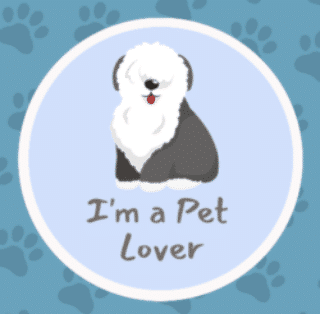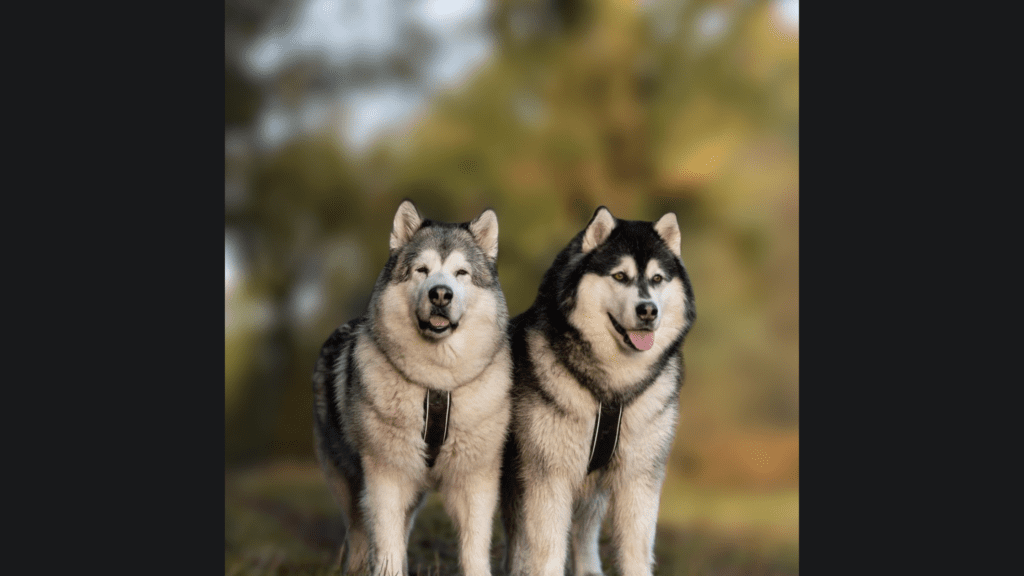The Alaskan Malamute is a large and powerful breed of dog originally bred for heavy sledding and hauling in the harsh Alaskan wilderness. Alaskan Malamutes were bred for strength and endurance to hunt and carry heavy loads through deep snow.
Alaska’s indigenous Mahlemut people are the ancestors of the Alaskan Malamute. The Mahlemut people have relied on the Alaskan Malamute for transportation, hunting, and companionship for millennia. Alaskan Malamutes were bred for strength and endurance to hunt and haul heavy loads through deep snow.
A sturdy and devoted companion, the Alaskan Malamute is a gorgeous breed. People admire them for their bravery, strength, and stamina. Furthermore, they are renowned for their gregarious nature and enthusiasm for social interaction. This dog is a lovely pet for busy families or those who can meet the breed’s high activity and attention needs.
Physical Characteristics
- Size: Alaskan Malamutes are a large breed of dog, typically weighing 75-85 pounds and standing 25-28 inches tall at the shoulder. They are a sturdy, muscular breed with thick, fluffy coats.
- Coat: Alaskan Malamutes have thick, fluffy double fur designed to keep them warm in freezing temperatures. The outer skin is coarse and water-repellent, while the undercoat is soft and dense. The hair comes in various colors, including shades of gray, black, and sable.
- Coloring: The most common colors are gray and white, but they can also have other colors such as black and white, sable and white, and red and white. Their face frequently has a mask, and their ears, tail, and legs are generally darker than the rest of the body.
- Characteristic “snowshoe” feet: Alaskan Malamutes have large, round paws covered in thick fur, known as “snowshoe” feet. These feet help to distribute their weight more evenly over soft snow, which makes it easier for them to pull heavy loads through deep snow.
- Thick, fluffy tail: Alaskan Malamutes have a thick, fluffy tail, which is another adaptation to the cold. The tail steers them through heavy snow and keeps their nose and face warm when sleeping.
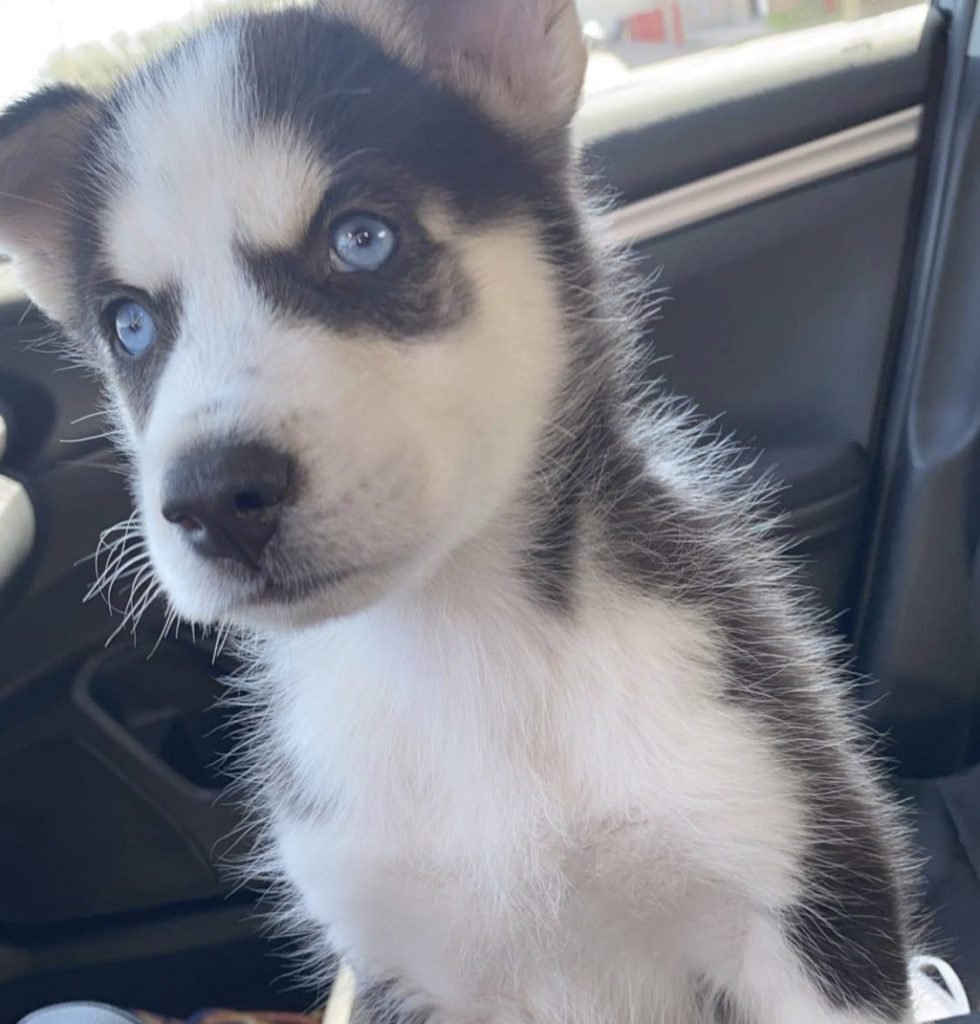
Physical Characteristics
- Friendly and outgoing: Alaskan Malamutes are known for their friendly and outgoing personalities. They are affectionate and loving towards their families and are great with children. They are also familiar with other pets and animals. They are known to protect their loved ones and make excellent watchdogs.
- High energy level: Alaskan Malamutes are a high-energy breed and require a lot of exercise and activity to keep them happy and healthy. They are known for their endurance and stamina and love running and playing. They also enjoy hiking, biking, swimming, and other outdoor activities.
- Need for regular exercise: Alaskan Malamutes have a high energy level and require a lot of everyday activities. They are not recommended for apartment living or for people who need more time or energy to provide them with the training they need. They need a fenced yard or acreage to run and play, and they also enjoy going for long walks or runs with their owners.
- Strong pack instincts: Alaskan Malamutes have strong pack instincts and thrive on being part of a family. They love to be around people and other animals and do not do well when left alone for long periods. They are known to become destructive when they are bored or lonely.
- Need for socialization: Alaskan Malamutes need to socialize with different people, animals, and environments at a young age. That will help them grow into well-adjusted and well-behaved adult dogs. Socialization can include training classes, dog parks, and other activities where they can meet new people and animals.
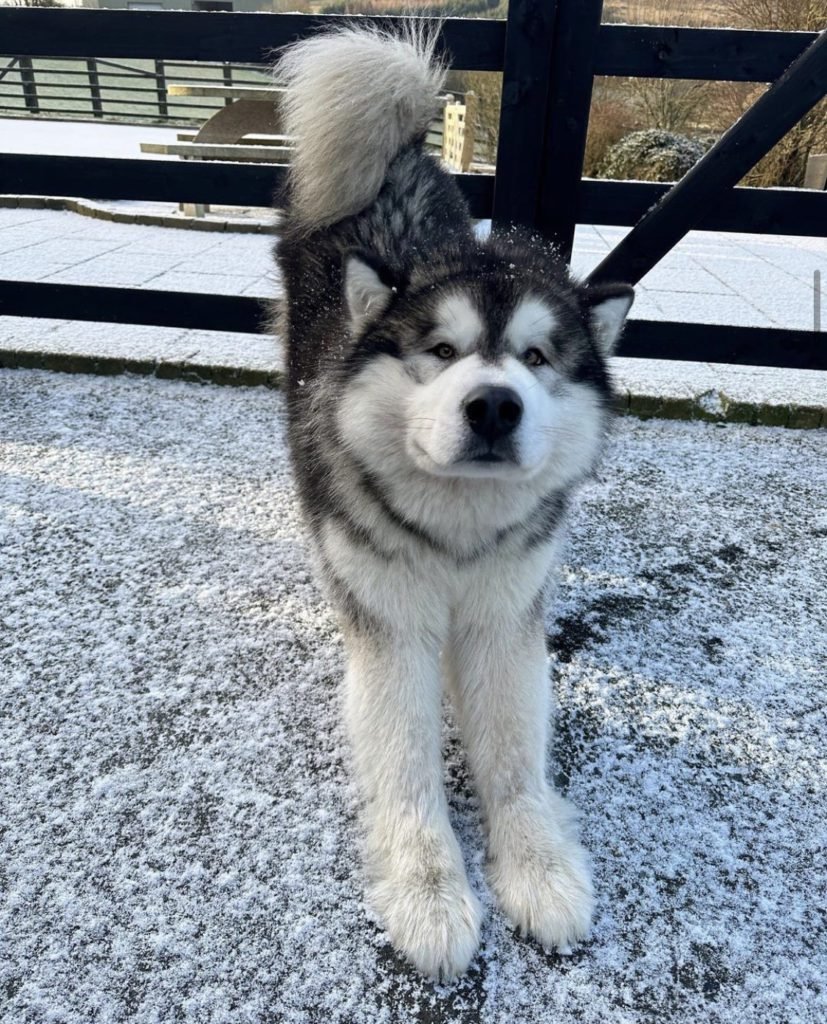
Training and Care
- Intelligence and trainability: Alaskan Malamutes are intelligent and eager to please their owners. They are also very independent and stubborn sometimes, so it’s essential to start training them young and use positive reinforcement methods. They respond well to consistent, firm, and fair training.
- Proper exercise: Alaskan Malamutes have a high energy level and require a lot of regular activities. They need a fenced yard or acreage to run and play, and they also enjoy going for long walks or runs with their owners. They also enjoy hiking, biking, swimming, and other outdoor activities.
- Grooming: Alaskan Malamutes have a thick, fluffy double coat that requires regular grooming to keep it clean and free of tangles. They should be brushed at least once weekly and often during shedding seasons. They also require regular bathing and nail trimming.
- Nutrition: Alaskan Malamutes have a high energy level and require a high-quality diet rich in protein and fat. They also need to have enough calories to sustain their high energy level. It is essential to feed them the appropriate amount of food and to monitor their weight to prevent obesity.
- Common health issues: Alaskan Malamutes are generally healthy but prone to some health issues. Some common health issues of the species include hip dysplasia, bloat, and cataracts. Regular vet checkups, a healthy diet, and exercise, can help prevent or mitigate these issues.
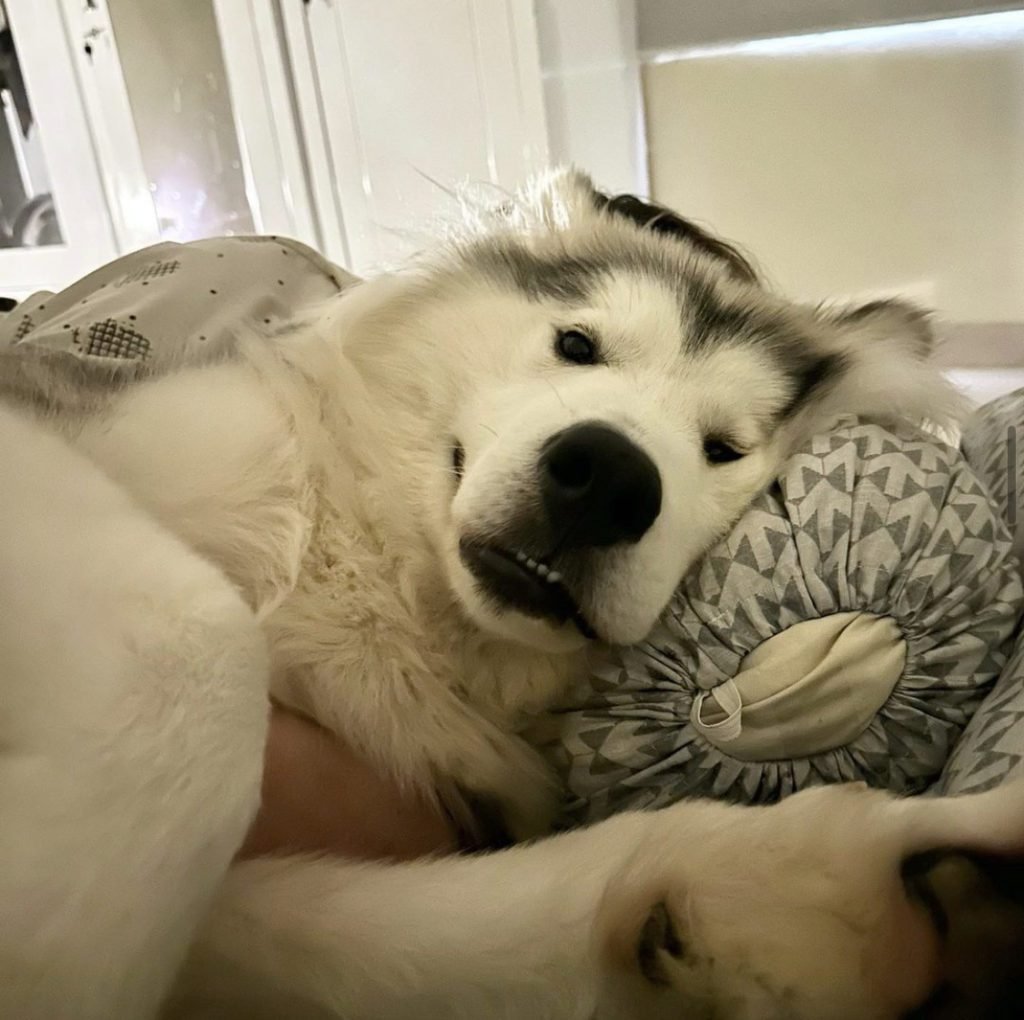
Alaskan Malamute's Price
- The cost of an Alaskan Malamute can vary depending on several factors, such as the breeder, location, and the dog’s bloodline and pedigree.
- On average, the price for a well-bred Alaskan Malamute puppy from a reputable breeder can range from $800 to $2,500.
- Keep in mind that the price of a puppy is just the beginning. Additional costs are associated with owning an Alaskan Malamute, such as food, veterinary care, grooming, and training.
- Some breeders may also require a deposit or a waiting list to reserve a puppy, which can add to the overall cost.
- Adopting an Alaskan Malamute from a rescue or shelter can be a more affordable option. The cost of adoption can range from $200 to $500 and includes the cost of spaying or neutering, vaccinations, and microchipping.
- A dog is a lifelong companion, so it’s essential to factor in the time and money needed to care for it.
- It is also vital to research and chooses a reputable breeder who can provide you with information about the puppy’s bloodline, health, and temperament.

FAQ about Alaskan Malamute
How do Alaskan Malamutes handle hot weather?
Alaskan Malamutes are a thick-coated breed and not well-suited to hot weather. They are more comfortable in colder climates. They have a double coat, which means they have a thick undercoat and long outer fur, which can make them less tolerant to hot weather. It’s essential to provide them with plenty of shade, water, and air conditioning when it’s hot.
What is the difference between Alaskan Malamutes and Alaskan Huskies?
Alaskan Malamutes and Alaskan Huskies are two different breeds of dogs. Alaskan Malamutes are more significant and more potent and were bred for heavy freighting, while Alaskan Huskies are smaller and faster, and their genetics are suitable for racing and sledding. Alaskan Malamutes are also more independent and can be stubborn, while Alaskan Huskies are more eager to please and are more responsive to training.
Can Alaskan Malamutes be trained for therapy work?
Alaskan Malamutes are appropriate for therapy work, but it is important to note that they are less common than other breeds in this field. They are known for their friendly, outgoing personalities and are great with children, making them ideal for therapy work. However, it is essential to train and socialize them properly and to provide them with regular exercise and mental stimulation to keep them happy and healthy.
How do you properly introduce an Alaskan Malamute to a new baby or child in the household?
Introducing an Alaskan Malamute to a new baby or child in the household should be done with care and patience. Supervise all dog-kid encounters and educate the youngster on approaching the dog. Offer the dog time to acclimate to the new addition and give them lots of positive reinforcement and prizes for good conduct around the youngster. –
How do Alaskan Malamutes fare in urban environments?
Alaskan Malamutes are a high-energy breed, requiring a lot of regular exercises, making them less suitable for urban environments. They are also known to be quite vocal and loud, which can be a problem in apartments or close quarters living. They are also not well suited to hot weather as they have a double coat, making them less tolerant.
Can Alaskan Malamutes be trained for search and rescue?
Alaskan Malamutes are intelligent and fit perfectly for search and rescue. However, they are more uncommon for this purpose than other breeds, such as German Shepherds or Labrador Retrievers. It’s essential to provide them with proper training and socialization and to ensure they are physically and mentally fit for the task.
How do you manage an Alaskan Malamute’s thick coat during shedding season?
An Alaskan Malamute’s thick coat requires regular grooming to keep it clean and free of tangles. During shedding season, it’s essential to brush them daily to remove loose hair and to use a shedding blade or a slicker brush to remove the undercoat. Regular bathing and trimming their nails can also help maintain their coat. It’s also essential to provide them with a healthy diet to promote healthy fur.
Are Alaskan Malamutes suitable for first-time dog owners?
Alaskan Malamutes are a large, high-energy breed, requiring a lot of time and energy to care for them properly. They also have a strong independent streak and can be stubborn sometimes, making training and obedience more challenging. They also need to be better suited to hot weather. First-time dog owners may need help to provide the exercise and attention they need and may find it challenging to train and handle them. It’s essential for first-time dog owners to carefully consider their lifestyle and ability to meet the needs of an Alaskan Malamute before bringing one home.
